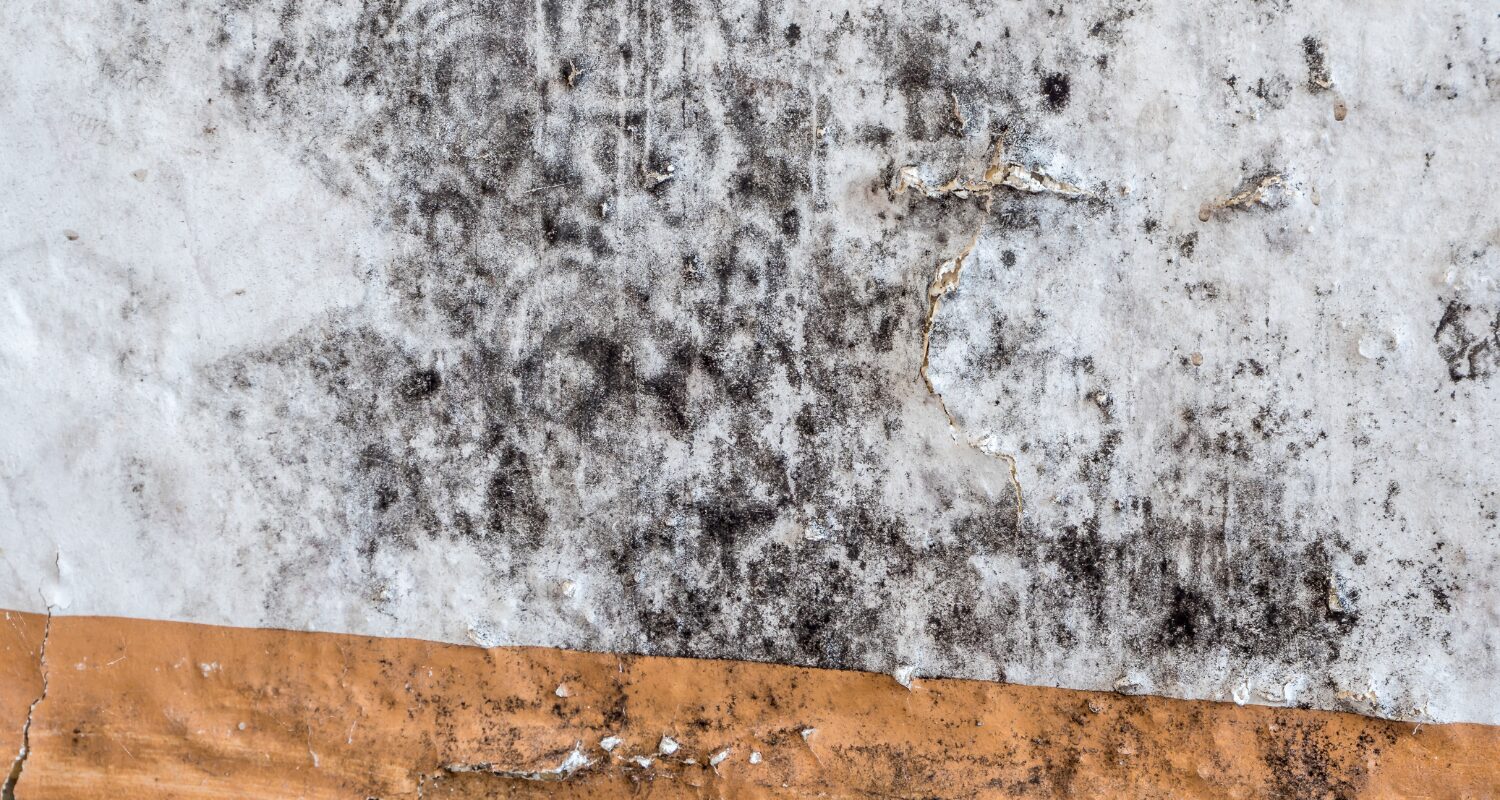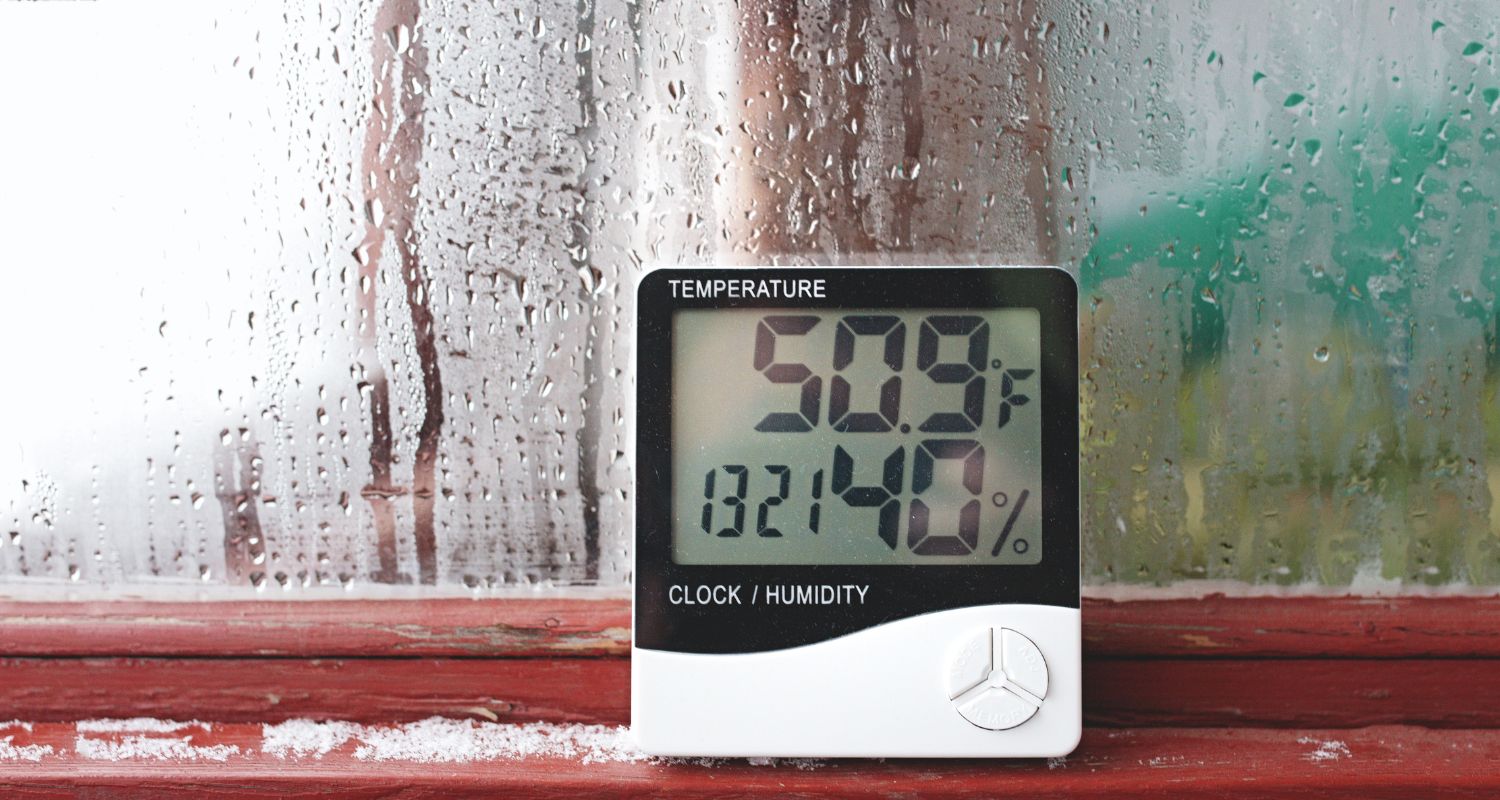
How Humidity Causes Water Damage And Mould Growth
Humidity plays a crucial role in the development of both water damage and mould growth.
Here’s a breakdown of how it impacts these issues.
Let’s get right into it!
Condensation and Moisture Accumulation: According to the Canadian Mortgage and Housing Corporation (CMHC), when indoor humidity levels exceed 60%, moisture in the air can condense on cooler surfaces such as windows, walls, and pipes. This condensation can contribute to water damage by deteriorating building materials and creating a conducive environment for mould growth.
Surface Saturation: High humidity leads to the saturation of porous materials like wood, drywall, and insulation. The National Institute of Building Sciences reports that these materials absorb moisture, which can result in warping and structural damage. The increased moisture also provides a perfect breeding ground for mould and mildew.
Mould Spore Germination: Mould spores are ubiquitous in the environment but require specific conditions to grow. The U.S. Environmental Protection Agency (EPA) notes that relative humidity levels above 60% accelerate mould spore germination and growth. This is because high humidity levels create the ideal environment for mould to thrive.
Structural Damage: Persistent high humidity can cause building materials to expand and contract, leading to warping, cracking, and other forms of structural damage. The American Society of Home Inspectors highlights that this can compromise the structural integrity of a building and exacerbate mould issues.
Health Implications: The Canadian Centre for Occupational Health and Safety (CCOHS) points out that mould growth can lead to respiratory problems, allergies, and asthma. Excess moisture that fuels mould growth can also contribute to the presence of dust mites and other allergens, impacting indoor air quality.
10 Ways To Lower Humidity Levels
Use Dehumidifiers: Dehumidifiers are effective in removing excess moisture from the air. According to CMHC, these devices are especially useful in damp areas like basements and crawl spaces. They help maintain indoor humidity levels between 30% and 50%, which is optimal for preventing mould growth.
Improve Ventilation: Ensure proper ventilation in moisture-prone areas such as bathrooms and kitchens. Using exhaust fans and opening windows helps to reduce indoor humidity levels and prevent condensation.
Install Air Conditioners: Air conditioners not only cool the air but also reduce humidity by condensing moisture. Regular maintenance of air conditioning units is crucial for their optimal performance in controlling humidity levels.
Fix Leaks: Address any leaks in plumbing, roofing, or windows promptly. Leaks introduce excess moisture into your home and can significantly increase indoor humidity levels. The Insurance Bureau of Canada advises quick repairs to prevent water damage and mould growth.
Use Moisture Absorbers: Place moisture absorbers like silica gel or activated charcoal in areas prone to dampness. These products help to reduce humidity by absorbing excess moisture from the air.
Insulate Pipes: Insulating cold water pipes can prevent condensation, which contributes to high indoor humidity. Proper insulation helps to maintain a stable temperature and reduce moisture accumulation.
Dry Wet Areas Promptly: Immediately clean up spills, leaks, and other sources of water. Wet carpets, floors, and upholstery can contribute to elevated humidity levels. CMHC advises quick action to dry affected areas and prevent mould growth.
Use Humidity Sensors: Install humidity sensors or hygrometers to monitor indoor humidity levels. Regular monitoring helps maintain humidity within the recommended range and allows for timely intervention if levels rise.
Maintain Gutters and Downspouts: Keep gutters and downspouts clean and in good repair to prevent water from seeping into your home’s foundation. This prevents increased humidity levels and potential water damage.
Seal Windows and Doors: Ensure that windows and doors are properly sealed to prevent humid air from entering your home. Proper sealing helps maintain indoor humidity at optimal levels.
5 Solutions For Water Damage And Mould Growth
Immediate Water Removal: If water damage occurs, remove the water as quickly as possible using pumps and wet vacuums. Dry affected areas thoroughly using fans and dehumidifiers. The CMHC recommends prompt action to prevent further damage and mould growth.
Professional Mould Remediation: For significant mould infestations, hire a professional mould remediation service. They have the expertise and equipment to safely and effectively remove mould and repair damaged areas, ensuring that the problem is thoroughly addressed.
Dry and Repair Affected Areas: After removing water, ensure that all affected materials are dried out thoroughly. Repair or replace damaged materials, such as drywall or insulation, to prevent further mould growth. Proper repair helps restore the integrity of the building.
Clean and Disinfect: Clean and disinfect surfaces affected by water damage to prevent the spread of mould spores. Use appropriate cleaning solutions and consider using an air purifier to remove airborne spores and improve indoor air quality.
Address the Root Cause: Identify and address the source of the moisture to prevent recurrence. This might involve repairing leaks, improving drainage, or adjusting indoor humidity levels. The Insurance Bureau of Canada highlights the importance of addressing the root cause to prevent future issues.
FAQs About Water Damage via Humidity
- What is the ideal indoor humidity level?
- The ideal indoor humidity level is between 30% and 50%. This range helps to prevent mould growth and minimise water damage.
- How can I tell if I have high humidity in my home?
- Signs of high humidity include condensation on windows, musty odours, and visible mould growth. Using a hygrometer can provide an accurate measurement of indoor humidity levels.
- Can high humidity cause structural damage?
- Yes, prolonged high humidity can cause materials like wood and drywall to swell, warp, and deteriorate, leading to structural damage. The American Society of Home Inspectors warns that this can also exacerbate mould issues.
- What are the health risks associated with mould growth?
- Mould growth can lead to respiratory problems, allergies, and asthma. According to the Canadian Centre for Occupational Health and Safety, mould can also contribute to other health issues, especially in sensitive individuals.
- How long does it take for mould to start growing after water damage?
- Mould can start growing within 24 to 48 hours after water damage if conditions are conducive (e.g., high humidity and warmth). Prompt action is essential to prevent mould growth.
- Can I remove mould myself, or should I hire a professional?
- Small areas of mould can sometimes be addressed with DIY methods, but for extensive mould infestations, it is advisable to hire a professional. Professionals have the expertise and equipment necessary for safe and effective mould remediation.
- What types of materials are most susceptible to water damage?
- Porous materials like wood, drywall, and insulation are most susceptible to water damage and mould growth. These materials absorb moisture easily, making them ideal breeding grounds for mould.
- How can I prevent water damage in my home?
- Prevent water damage by conducting regular maintenance, fixing leaks promptly, using dehumidifiers, and ensuring proper ventilation. The Insurance Bureau of Canada emphasises the importance of proactive measures to protect your home.
- Are there any building materials that are more resistant to water damage?
- Materials such as concrete, metal, and certain treated woods are more resistant to water damage compared to standard wood and drywall. These materials are less porous and better able to withstand moisture.
- What should I do if I find mould in my home?
- If you find mould, address the moisture source immediately, then clean and dry the affected area. For large mould infestations, consult a professional mould remediation service to ensure thorough and safe removal.
If you have any questions about our article “How Humidity Causes Water Damage And Mould Growth” or need water damage services feel free to call us at 1-833-WE-DRY-IT anytime 24/7/365 or chat with us in near real-time on our Facebook fan page.
Related Posts
Fire Damage Restoration Articles
The Dos And Don’ts Of Commercial Fire Damage
Forest Fire House Damage: What To Do After Your House Is Damaged By A Forest Fire And Who to Call?
Fire prevention tips for the summer
How to clean up after a house fire
Fire damage restoration checklist
Fire damage tips: 6 hazards property owners miss
How smoke from fires can negatively affect your health
What are the most common causes of house fires?
10 helpful smoke damage cleaning tips
Mould Removal Restoration Articles
Is Bathroom Mould Dangerous? Powerful Mould Prevention Tips Inside
Dangers Of Bathroom Mould And Tips On How To Clean And Prevent It
Got Bathroom Mould? Here Are Some Must-Know Bathroom Mould Cleaning Tips
5 Signs You Have Mould Growing In Your Walls
“Can I Remove Mould Myself?” Our Mould Removal Experts Have Answers
7 Must-Know Reasons Why You Should Get A Mould Inspection Before Buying A House
Does Mould Attract Bugs? Yes And Here’s What Kind And Why
How To Remove Mould From The Attic [Mould Prevention Tips Inside]
How Rain Causes Mould Growth-Prevention Tips Included
Must-Know Tips: How To Remove Mould In Your Basement
Water Damage Restoration Articles
How to prevent home storm damage
What you can expect from a fire damage restoration company
Water damage prevention tips from the most common problems we’ve seen
Top causes of water damage in commercial buildings and how to find them
Must-know water damage tips: What to do after your house floods
What does good water damage restoration look like?
DIY water damage restoration and the hidden dangers
How to choose the right water damage company
Flast floods: What to do before, during and after a flash flood
What to do when your attic leaks?
This is why water damage is a silent home killer
Related Water Damage Services
Fire damage restoration services
Water damage restoration services
Emergency cleanup services
Mould removal services
Weather damage services


